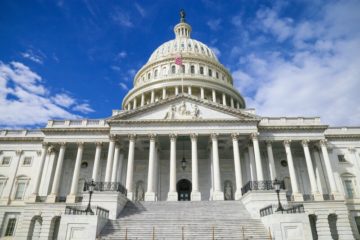Cutting power plant emissions is helpful, but the magnitude of the climate problem warrants a carbon tax
Climate is back. On Monday Pres. Obama rolled out a plan to cut carbon emissions from power plants by 2030 to an average of 30 percent less than 2005 levels. His timing is in tune with public opinion. Now that the economy is recovering from the global financial crisis, new polls show that public concern is once again rising. Alarm bells from the scientific community are getting louder as well. The latest reports from the U.N. Intergovernmental Panel on Climate Change show that even though the science is getting stronger governments have done practically nothing to check emissions. In May, a massive U.S. government study that mobilized the best of American science showed how rising seas, stronger storms, longer droughts and other dangers will harm the country. Similar studies in many other countries, including China and India, carry similar warnings.
What should be done now that voters are refocused on the dangers of climate change? So far, the answer has mainly been regulation that tinkers at the margins. New energy-efficiency standards and regulations on power plants, such as the ones announced today, will play a role in slowing the growth in emissions. But regulation can only go so far. What’s really needed is a new emissions tax—often called a “carbon tax” because the biggest cause of warming is atmospheric emission of carbon dioxide.
The case for a carbon tax begins with economic logic. Nobody knows which technologies will be most cost-effective when it comes to cutting emissions. Direct regulation almost guarantees that regulators will force the use of many technologies that will prove unwise. The new regulations allow for some flexibility, which is important, but they apply just to the electric power sector. New legislation that would create an economy-wide market-based strategy, like a tax, gives firms in all sectors the flexibility to choose and adjust.
Taxes aren’t the only way to harness the power of the market. Another strategy is “cap and trade”—a scheme that involves setting limits on emissions and then letting firms trade the right to pollute. Because cap and trade uses markets, it’s better than regulation. But in the real world cap-and-trade systems haven’t aligned well with how real firms and governments make economic decisions. When emission quantities are capped, prices must float as markets equilibrate. That’s why the European Union’s cap-and-trade system, the world’s largest, has seen prices that gyrate from $42 in 2006 to just about $7 today. Volatile prices have encouraged policy makers to craft endless schemes to manipulate the quantities of emission credits on the market—and thus prices. Those efforts, although well intentioned, send signals that policy decisions are not reliable. Carbon taxes, by contrast, fix the price and send much more credible signals to firms about just how much effort they should make to control emissions.
Practical policy, of course, doesn’t always flow directly from wonky economic logic—politics is paramount. On this front the standard view has been that carbon taxes—because they are taxes—are political suicide for politicians seeking reelection. Regulation, by contrast, is better because it lets policy makers hide the cost of action. That logic needs to be taken seriously, but its wrong and shortsighted for two reasons:
One political advantage of taxes is that they generate huge revenues. Smart politicians know how to redirect those monies to build political coalitions. That’s what Australian politicians did when they targeted more than half the revenues from the country’s carbon tax to offset higher energy costs for low- and middle-income households, along with some of the funds for climate-specific research and development schemes. The Australian experience also reveals that even with the best political engineering it is still hard to sustain political support for costly policies—a problem that bedevils climate policy of all types. Smart political engineering to “recycle” the revenues of carbon taxes could be used here in U.S. by linking carbon taxes to popular tax reforms. The last major overhaul of the federal tax code was in 1986, and a growing array of politicians know that a new reform is overdue.
A second political advantage of carbon taxes is that their economic performance improves with scale. Direct regulation, because it is prone to error, almost guarantees a political backlash as policy becomes more aggressive and noticeable. Shortsighted politicians like direct regulation because its costs are hidden at first. Serious strategies for cutting emissions must think about the long term. As a carbon tax scales so does the revenue—expanding the opportunities for political engineering and making government more dependent on the income and less able to reverse course.
A fresh look at carbon taxes makes sense not just for national policy but also in America’s engagement with the rest of the world. Less than one fifth of world emissions come from the U.S.; no strategy for stopping global warming will work without global engagement. In recent years, with gridlock in Washington, D.C., the rest of the world has come to doubt whether the U.S. can make credible commitments to solve global problems. A carbon tax, rooted in hard-nosed economic and political realities, can boost the country’s credibility. That, in turn, can make it easier to put pressure on other big emitters such as China to do their parts as well.
ABOUT THE AUTHOR(S)
David G. Victor is a professor of international relations at the University of California, San Diego, and director of its Laboratory on International Law and Regulation.


